|
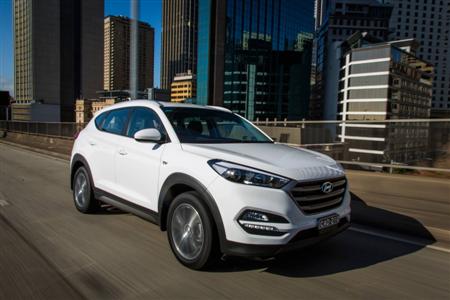 Hyundai Tucson Active X
Hyundai Tucson Active X
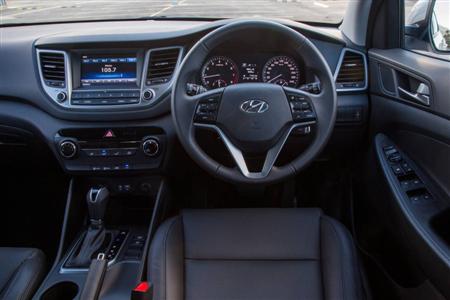 Hyundai Tucson Active X
Hyundai Tucson Active X
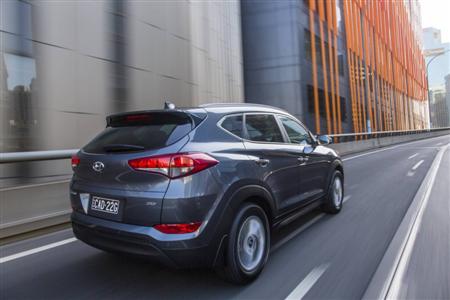 Hyundai Tucson Elite
Hyundai Tucson Elite
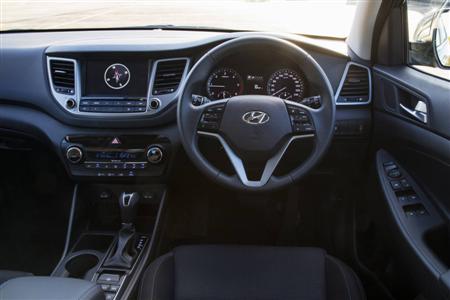 Hyundai Tucson Elite
Hyundai Tucson Elite
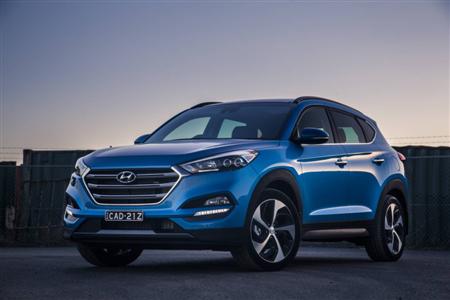 Hyundai Tucson Highlander
Hyundai Tucson Highlander
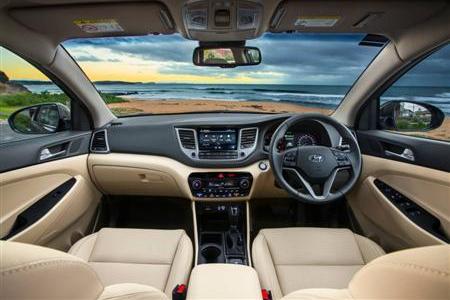 Hyundai Tucson Highlander
Hyundai Tucson Highlander
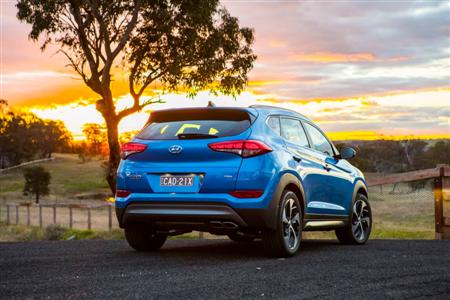 Hyundai Tucson Highlander
Hyundai Tucson Highlander
|
|
|
Hyundai Tucson released
Home >
News >
Hyundai
Related stories:
17th July, 2015 -
Hyundai Tucson prices announced
18th February, 2015 -
Hyundai Tucson: new generation
Recent new car releases ..... here
Upcoming new car releases ..... here
10th August, 2015
- All-new Hyundai Tucson brings modern design and capability to the Medium SUV Segment
- Highly competitive pricing and features across a four-tier range, starting from $27,990*
- New ActiveX model joins the line-up
- Stylish new looks, comprehensive equipment levels
- Benchmark levels of NVH, overall refinement, sophistication and user-friendliness
- Cutting-edge new technology includes Autonomous Emergency Braking and Apple CarPlay support
- Exhaustive local suspension and steering tuning for world-class dynamics
The all-new Hyundai Tucson SUV has arrived in Australia, bringing class-leading dynamics, design, refinement and value
to the Australian medium SUV segment.
Re-imagined from the ground up, and priced from a highly competitive $27,990*, the all-new Tucson is the successor to
the successful ix35.
Longer and wider than ix35, all-new Tucson moves up to the ‘Medium SUV’ category in the Federal Chamber of Automotive
Industry’s (FCAI’s) vehicle classification, thanks to its larger footprint. It is 65mm shorter than a Mazda CX-5, for
example, yet has more front and rear leg and hip room and 85 litres more boot space with the rear seats in place.
This ambitious, high-tech vehicle sets its aim squarely at Australia’s medium SUV class leaders. All-new Tucson combines a sleek, sporty new look with new technology and convenience features and high-tech safety equipment. Customers
also benefit from exceptionally high standards of refinement and NVH (noise, vibration, harshness) suppression.
All-new Tucson highlights include:
- Apple CarPlay connectivity (from September)
- Three-mode Autonomous Emergency Braking (AEB)
- Proximity Smart Key and Smart Power Tailgate
- LED headlights with static bending lights
- Lane Keeping Assist and Lane Departure Warning
- Rear Cross Traffic Alert
- Advanced Traction Cornering Control
- Reversing camera standard across the range
- Trailer Stability Assist
- 7-speed Dual-Clutch Transmission
- Turbocharged 1.6-litre petrol engine (shared with Veloster SR Turbo)
Inside, all-new Tucson is larger in all key dimensions – its interior is roomy, uncluttered and ergonomically
advanced. All four trim grades are well equipped and, in keeping with Hyundai’s Modern Premium philosophy, interior
surfaces and controls now use high-quality soft-touch materials and finishes.
All-new Tucson boasts a stiff and safe body structure that ensures enhanced levels of occupant protection and
exemplary dynamic responsiveness.
The four-tier Tucson range offers front-wheel drive or all-wheel drive, four engines and three transmissions.
Significantly, Elite and Highlander models adopt a retuned version of Hyundai’s Gamma 1.6T GDi engine – the potent
direct-injection turbocharged powerplant shared with its Veloster SR coupe stablemate.
All–new Tucson Model Range:
The 1.6T GDi engine is matched exclusively to Hyundai’s advanced, in-house developed, seven-speed dual-clutch
transmission (DCT).
As with every Australian Hyundai model, except iMax and iLoad, all-new Tucson’s suspension has been exhaustively
tested in local conditions and tuned for Australian roads by HMCA’s local chassis development team.
AUSTRALIAN-DEVELOPED RIDE AND HANDLING
Hyundai Motor Company Australia’s chassis development team exhaustively road-tested each Tucson variant, collecting
and analysing copious amounts of data in the process.
The HMCA team is lead by General Manager Product Engineering, Hee Loong Wong (aka ‘Wongy’), with support from lead
test driver and Senior Manager Product Planning, Andrew Tuitahi, along with France-based consultant chassis ‘guru’,
David Potter.
In total, 103 tests of different damper, spring, stabiliser bar and tyre combinations were conducted to optimise the
vehicle’s ride/handling compromise.
The process was made even more complex because huge global demand for all-new Tucson means Australian-market vehicles
are sourced from two Hyundai plants: in South Korea (ActiveX) and the Czech Republic (all other models). Small but
significant differences in specification between Tucsons built in the two different plants meant HMCA’s chassis
development team was tasked with an even more complex development process than normal, requiring the fine-tuning of every
grade and engine, while also standardising suspension componentry. The aim was to introduce a common ‘feel’ to every
Tucson, no matter which engine/transmission combination the car features.
In all, the team built and tested 162 dampers across all-new Tucson’s range of 2WD and AWD variants with petrol and
diesel drivetrains. The extensive data collected was further analysed using HMCA’s suspension and ride metrics
database.
“The process was long but the aim was simple,” says Wongy. “Just as we aim for with all new models launched
here, we wanted to introduce a uniquely Hyundai Australian ride and handling DNA to Tucson.”
“So, if you were to drive all-new Tucson now then jump into, say, a Sonata, you would find a similar relationship
between the way they ride and handle. They would have a similar character.”
Andrew Tuitahi continues: “To further explain to anyone who is unfamiliar with our Australian ride and handling
DNA, it would be: smooth, calm and comfortable, in a car that encourages the driver to explore its limits a little more,
to push it a little further.”
“And that’s what we aimed for when we worked on the all-new Tucson. It doesn’t shy away from being grabbed by the
scruff of the neck and driven properly. And when you do drive it that way, it rewards, it gets better rather than worse –
it’s fun to drive, without being harsh or uncomfortable, even on the worst roads our country can throw at it.”
|
|
|

Self-Catering Holiday
Accommodation in
Denmark, WA
..... more
|
|
|
Suspension tuning facts:
· 104 separate suspension combinations evaluated
· 65 front dampers built and tested
· 97 rear dampers built and tested
· 3 front anti-roll bars tested
· 2 rear anti-roll bars tested
· 3 front spring options tested
· 3 rear spring options tested
· 2 drive-trains tested
· 4 power-trains tested
· 3 transmissions tested
· 3 wheel sizes tested
EXTERIOR
Dimensions
All-new Tucson is 65mm longer than ix35 and sits on a 30mm-longer wheelbase. Its overall height is 5mm higher and both
front and rear tracks are wider, giving the vehicle a more purposeful stance than its predecessor.
Design and features
All-new Tucson was styled in Hyundai’s European Design Centre, in Russelsheim, Germany, under the direction of Hyundai
Motor Group’s President and Chief Design Officer, Peter Schreyer. This is the first Hyundai production vehicle to be
overseen in its entirety by Mr Schreyer.
Tucson represents the latest iteration of Hyundai’s Fluidic Sculpture 2.0 design philosophy, blending flowing
surfaces, bold proportions and honed character lines to make an SUV with an athletic-like presence.
Hyundai’s signature hexagonal grille more closely aligns all-new Tucson with its bigger SUV sibling Santa Fe, HMCA’s
top-selling i30, and the upmarket Sonata and Genesis sedans. Also prominent up front are striking black-shrouded
headlights. As with Santa Fe, stylish Daytime Running Lights and fog lights are set in separate angular recesses at
bumper level.
In profile, upswept character lines and asymmetric wheel arches filled with head-turning new-design alloy wheels –
17-inch, 18in, or 19in – accentuate all-new Tucson’s longer wheelbase and more dynamic stance.
The rear design is refreshingly uncomplicated, with clean horizontal lines flowing from 'muscular' rear wheel arches
and accentuated by slim combination tail-lights. Slim-line reflectors are integrated into the rear bumper.
|
|
|
Next Car's great drives!
Check this out!
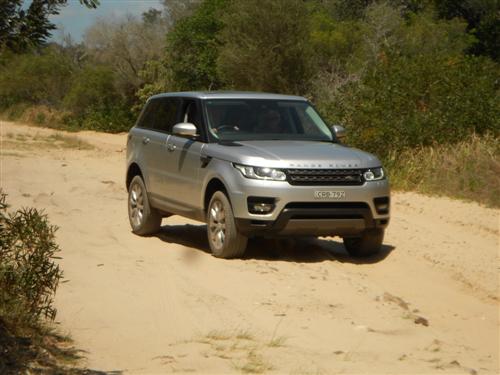
Point Plomer Road .....
more
|
|
|
Other stand-out all-new Tucson exterior features include:
· Auto-folding side mirrors (ActiveX, Elite and Highlander)
· LED headlights with static bending lights (Elite and Highlander)
· Courtesy lights (Elite and Highlander)
· Panoramic glass sunroof (Highlander)
· LED rear combination lights (Elite and Highlander)
· Power tailgate (Elite and Highlander)
· Front and rear skid plates (Highlander)
· Dual-tip trapezoidal exhaust (Highlander)
Manufacturing
Australian-market versions are sourced from two plants: Hyundai’s ultra-modern facility in Ulsan, South Korea, and the
Nosovice factory in the Czech Republic.
Aerodynamics
All-new Tucson’s impressive 0.33Cd aerodynamic figure is a product of Hyundai’s meticulous attention to design, NVH
and fuel economy.
Major contributing factors to all-new Tucson’s impressive coefficient of drag figure are:
· New-design side mirrors with slimmer, more streamlined brackets
· New roof-mounted rear spoiler side garnishes to more efficiently channel airflow past the C-pillars
· New front bumper lip and full side skirts to help direct airflow away from the undercarriage
· New-design inner-wheel arch deflectors
· Strategically located underfloor trays to further smooth airflow under the vehicle
Combined, these measures and aerodynamic aids help reduce all-new Tucson’s fuel consumption, improve driver visibility
and dramatically lower in-cabin wind noise levels, while also contributing to improved vehicle stability at highway
speeds.
INTERIOR
Dimensions
All-new Tucson closely rivals or beats its medium SUV competitors in all key interior dimensions, even with a compact
exterior. In terms of cabin space, there is generous leg, shoulder, hip and headroom. At 488 litres seats-up and 1,478
litres seats-down (VDA) luggage/cargo area also is very generous; importantly, access to it has been enlarged to make
loading and unloading easier.
Design and packaging
All-new Tucson’s elegant interior design and clever packaging is the work of Hyundai’s US Design Centre in Irvine,
California.
Second-generation Tucson (badged ix35 in Australia) was widely acclaimed for its intuitive and driver-focused
interior. With a clean slate and an airier, more spacious cabin to work with, Hyundai’s designers were free to focus on
making all-new Tucson’s interior feel even more sophisticated and user-friendly.
New soft-touch, high-quality materials were used on all cabin surfaces, including the headlining, door trims, armrests
and console side mouldings. Controls and switches offer pleasing tactility. All-new Tucson’s interior also underwent
extensive ergonomic testing to ensure intuitive ease of use for all occupants. As an aside, final dust –sealing testing
was performed in the Australian outback and the results were said to be outstanding.
The visual impact of the modern, uncluttered dashboard is underlined by the striking contrast between the prominent
7-inch infotainment screen (8-inch in Elite and Highlander), black dash surfaces, and air vent and centre console chrome
accents. All-new Tucson Highlander also receives stylish chrome effect garnish on window switches.
In Tucson Highlander, the opening length of the panoramic sunroof has been increased by 112mm over its predecessor (now
489mm vs 377mm in ix35), giving an open, airy experience to rear-seat passengers. Additionally, the roof’s centre trims
have been repositioned, again to maximise the feeling of ‘openness’ in the cabin, especially the rear.
Importantly, the new wider tailgate allows easier access to All-new Tucson’s bigger luggage/cargo area. Maximum opening
width has been increased to 1,094mm (up from 1,080mm).
Clever cargo area packaging features include a rollerblade-type luggage screen, retractable rear parcel hooks and an
underfloor full-size spare.
Another example of the tremendous attention to detail that went in to all-new Tucson’s interior is the way the doors
sound when they are opened and closed. Thanks to newly re-engineered mechanisms, all four doors now produce a softer
sound when they are opened and shut with a deeper, more solid ‘thunk’.
Features and equipment
All-new Tucson’s stylish new interior brings class-leading features and equipment including:
Apple CarPlay and Android Auto: In a significant first for Hyundai Motor Company Australia, all-new Tucson Active and
ActiveX models support Apple CarPlay (from September), with Android Auto support to follow from early 2016.
Both systems offer seamless integration with existing Smartphone architectures to provide safe access to Google Maps
or Apple Maps navigation, Siri or Google Voice command functions – including hands-free messaging and dictation – music,
calendar entries, apps and more.
Support for Apple CarPlay will be available on all-new Tucson Active and ActiveX model variants sold from September
2015. Owners of vehicles delivered prior to September will be able to upgrade to CarPlay support via a simple software
update, applied either at dealerships or at home.
In early 2016, Google Android Auto connectivity also will be possible via easy software updates in all-new Tucson
Active and ActiveX.
“The beauty of these technologies is that they are powered by your Smartphone, they are dynamic and connected and
therefore, easily updated,” says Senior Manager Product Planning, Andrew Tuitahi.
“When Apple and Google improve these systems, by tweaking performance, adding functionality, or enabling new apps,
they will immediately be available in your Tucson.”
“Nowadays, we are always connected and we live in that connected ecosystem all day, everyday – when we are walking,
on the train, on the bus, at work and at dinner. It hasn’t mattered where we were … except in our cars. Until now, the
car has been the one black spot. Tucson changes that.”
“Apple and Google have created a protocol that allows Hyundai to give Tucson drivers safe, efficient in-car access
to their smart phone’s ecosystem.”
Audio/Infotainment systems
Over and above Car Play support, All-new Tucson Active and ActiveX are equipped with a 7-inch touchscreen infotainment
system with MP3 capability and six speakers.
All-new Tucson Elite and Highlander come standard with an 8-inch infotainment touchscreen, MP3 capability, six
speakers and state-of-the-art satellite-navigation system with three years’ HERE Map Care.
High-visibility supervision cluster
All-new Tucson relays a new level of essential information to its driver. A new high-visibility supervision cluster in
the Highlander model is located between the speedometer and tachometer in the instrument binnacle and integrates a
4.2-inch TFT-LCD screen which includes a digital speedometer.
Displayed in diagrammatic form and pinpointing specific problem areas, information instantly available to the driver
includes:
· Blind Spot Detection
· Fuse failure alert
· Headlight/indicator bulb failure
· Smart Key and pushbutton start information
· Autonomous Emergency Braking system check
· Tyre pressure monitoring (Highlander only)
Seats
The All-new Tucson’s seat features include:
· 10-way adjustable driver’s seat with 2-way lumbar support (Elite and Highlander)
· 8-way adjustable front passenger seat (Highlander)
· Multi-adjustable reclining rear seat backrest
· Heated and ventilated front seats with three-way temperature adjustment for each function (Highlander)
Air-conditioning
All-new Tucson’s optimised and improved climate-control air-conditioning system (Elite and Highlander) now includes
automatic windscreen Defog. Other impressive standard and available all-new Tucson interior equipment and features
include:
· Solar-control glass with privacy
· Electrochromatic rear-view mirror
· Pushbutton start with Proximity Smart Key
· Smart Powered Tailgate, which opens at the key-holder’s approach
· Electronic park brake
· Rain-sensing wipers
· LED map lights
NVH (Noise, vibration and harshness)
Hyundai’s engineers worked long and hard to achieve extraordinarily high levels of NVH refinement for the all-new
Tucson. They did so by improving the isolation of key components and increasing the use of sound-deadening materials in
such areas as behind the dashboard, inside the wheelarches and over a larger area of the drive tunnel.
Further NVH improvements were made via the fitment of new-design larger engine mounts and strategically located new
rubber dampers between the suspension components and the front and rear subframes. Special attention also was paid to
improving insulation of fans, air conditioning equipment and heater pipe components.
All-new Tucson’s stiffer body structure, together with the adoption of two-way rear strut location for both 2WD and
AWD variants, also helped significantly reduce road noise inside the cabin.
DRIVETRAINS
All-new Hyundai Tucson offers a choice of four high-tech, powerful and efficient engines, three transmissions and two
drivetrain lay-outs.
All engines have been enhanced to offer improved driveability and fuel efficiency while also meeting Euro5 emission
standards.
All-new Tucson introduces a larger 62-litre fuel tank (up from 58 litres in ix35).
2.0 MPi (Active and Elite, 2WD, 6-speed manual or 6-speed automatic)
Available in two-wheel-drive Active and Elite models, Hyundai’s in-line four-cylinder multi-point injected petrol
engine is matched to either six-speed automatic or six-speed manual (Active only) transmissions.
Engine specifications to be confirmed closer to Active and Elite 2WD variants on-sale date in early 4th quarter
2015.
2.0 GDi (ActiveX, 2WD, 6-speed manual or 6-speed automatic)
Hyundai’s 2.0-litre direct-injection four-cylinder petrol engine is available exclusively in 2WD Tucson ActiveX,
combined with Hyundai’s advanced six-speed automatic transmission.
Engine Specifications:
· Cubic capacity: 1,999cc
· Maximum power: 121kW @ 6,200rpm
· Maximum torque: 203Nm @ 4,700rpm
· 16-valve four-cylinder with Hydraulic Lash Adjustment (HLA)
· Dual Continuously Variable Valve Timing (D-CVVT)
· Gasoline Direct Injection
· Compression ratio: 11.5:1
· Fuel consumption rating: 7.8L/100km (manual)/7.9L/100km (automatic)
1.6T GDi (Elite and Highlander, AWD, 7-speed DCT)
Hyundai’s Gamma 1.6T GDi – a detuned version of the direct-injection petrol engine that powers the Veloster SR Turbo –
replaces ix35’s 2.4-litre petrol engine.
Available in both all-new Tucson Elite and range-topping Highlander, the 1.6T GDi is matched exclusively with
Hyundai’s in-house developed 7-speed DCT (Dual Clutch Transmission) and Hyundai’s Active On-Demand AWD system with front
and rear lock mode.
Engine Specifications:
· Cubic capacity: 1,591cc
· Maximum power: 130kW @ 5,500rpm
· Maximum torque: 265Nm @ 1,500-4,500rpm
· 16-valve four-cylinder with Manual Lash Adjustment (MLA)
· Dual Continuously Variable Valve Timing (D-CVVT)
· High-pressure TGDi (Turbo Gasoline Direct Injection)
· Twin-scroll turbocharger
· Electronically-operated Wastegate Actuator (WGA)
· Low-friction roller chains
· Compression ratio: 10.0:1
· Fuel consumption rating: 7.7L/100km
2.0 R-Series CRDi (Elite and Highlander, AWD, 6-speed automatic)
Hyundai’s 2.0 CRDi (Common Rail Direct Injection) four-cylinder turbo-diesel is the most potent engine available in
the four-tier Tucson range. It is available exclusively with Hyundai’s Active On-Demand AWD system and advanced six-speed
automatic transmission.
Engine Specifications:
· Cubic capacity: 1,995cc
· Maximum power: 136kW @ 4,000rpm
· Maximum torque: 400Nm @ 1,750-2,750rpm
· 16-valve four-cylinder with Hydraulic Lash Adjustment (HLA)
· Dual Continuously Variable Valve Timing (D-CVVT)
· Common Rail Direct Injection (CRDi)
· Electronic Control Variable Geometry Turbocharger (E-VGT)
· Compression ratio: 16.0:1
· Fuel consumption rating: 6.4L/100km (17-inch wheels)/6.8L/100km (19-inch wheels)
PASSIVE SAFETY
Body structure and rigidity
All-new Tucson’s more rigid body brings elevated levels of structural integrity and crashworthiness. Average BIW (Body
In White) strength was improved from 40.6kgf to 63.5kgf.
Advanced High Strength Steels (AHSS) make up 51 per cent of all-new Tucson’s impressively rigid body structure.
All-new Tucson’s stronger body structure also incorporates state-of-the-art Advanced High Strength Steel Hot Stamping
technology which further strengthens key structural componentry.
Hot-stamped AHSS structural components in all-new Tucson can be found in the engine bay, in the B- and C-pillars and
extending under the cabin and across the roof. Apart from improving side-crash safety, these strong new structures also
greatly improve All-new Tucson’s roof strength.
New crash-energy dissipating structures together with improved structural connectivity of major chassis components and
substantial revision of collision energy dispersal load paths also help improve all-new Tucson’s passive safety.
Important revisions to load paths included straightening body connections around the A-pillar mount areas and between the
dashboard and scuttle.
In-cabin safety features and equipment
Range-wide, all-new Tucson comes standard with six airbags: driver and front passenger airbags, front side (thorax)
airbags and full-length curtain airbags. Three-point seatbelts are fitted at all seating positions.
The driver and front passenger seatbelts incorporate anchor-point pre-tensioners and crash-locking tongues (CLT) in
the buckles themselves.
ACTIVE SAFETY
All-new Tucson brings a vast array of impressive crash-avoidance features and technology.
Standard safety equipment across the all-new Tucson range includes Hyundai’s comprehensive Electronic Stability
Control system, reversing camera with dynamic steering guidelines, four-sensor rear parking assist, automatic
dusk-sensing headlights and LED High-Mount Stop Light and Daytime Running Lights.
All-new Tucson’s brakes have been improved range-wide. Front discs are now 305mm (up from 300mm) while rear discs are
now 302mm (up from 262mm and 284mm).
To the new line-up of active safety equipment all-new Tucson Elite and Highlander add rain-sensing wipers and LED
headlights with static bending lights which help broaden the headlights’ beam in corners.
All-new Tucson Elite and Highlander also add Trailer Stability Assist (TSA) technology. TSA acts in a similar manner
to ESC, constantly monitoring car and trailer movements to suppress any snaking and swaying that might be caused by
crosswinds, uneven road surfaces or improperly distributed trailer loads. If TSA detects instability in the
vehicle-and-trailer combination, it momentarily brakes the appropriate wheel, or wheels, to help the driver regain
control.
Tucson Highlander adds four-sensor front parking assistance, Tyre Pressure Monitoring displays in its 4.2-inch colour
supervision cluster, and a state-of-the-art Autonomous Emergency Braking (AEB) system with three operation modes.
The AEB system requires the ESC system to be active, functioning at speeds between 8 km/h and 70 km/h for pedestrians
and between 8 km/h and 180 km/h for vehicles in front. The system is able to apply full braking power if it determines a
crash is imminent. At speeds below 80km/h, speed is rapidly reduced and the vehicle can even be automatically brought to
a complete stop if sufficient braking distance is available.
If Tucson is travelling above 80km/h, AEB will provide partial braking to reduce the severity of accidents and allow
the driver to conduct a safe and controlled avoidance manoeuvre where possible. At all speeds, the Forward Collision
Warning (FCW) function of the AEB system warns of potential danger ahead via an audible and visual alert to the driver.
Additional active safety equipment standard in Highlander includes:
· Lane Keeping Assist
· Blind Spot Detection
· Rear Traffic Cross Alert
SUSPENSION, STEERING AND BRAKES
All-new Tucson’s suspension, steering and braking componentry is mounted to a significantly more rigid chassis and
body structure than its predecessor.
The strut-type front suspension uses advanced four-point ‘H’ geometry. Rear suspension is multi-link, although its
geometry has been altered from that used in ix35. Where previously only ix35 AWD variants incorporated dual lower
suspension arms, the more robust location arrangement has been standardised for both 2WD and AWD all-new Tucson
variants.
For sharp, precise steering response all-new Tucson’s motor-driven power steering (MDPS) uses latest-generation
32-bit Control Logic computer processing. However, rather than ix35’s Flex Steer, All-new Tucson adopts Hyundai’s latest
Drive Mode Select system, as used in Genesis and all-new Sonata.
Rather than Flex Steer’s Comfort, Normal and Sports selections, all-new Tucson’s Drive Mode Select system offers three
distinct settings in Elite and Highlander models: Normal, Eco or Sport (ActiveX models feature two settings). Each
setting adjusts transmission programming, throttle mapping and steering effort.
In Eco setting, throttle effort is increased and, to help conserve fuel, transmission up shifts arrive at lower revs.
Sport Drive Mode adjusts power steering weight and throttle sensitivity, while the transmission holds lower gears for
longer.
All-new Tucson’s improved braking system includes larger front and rear rotors. Front disc size across the range now is
305mm (up from 300mm), while rear discs are 302mm (up from 262mm). Rear brake disc cylinder size has been increased from
34mm to 38mm.
KEY FEATURES AND EQUIPMENT OVERVIEW
All-new Tucson is available in four trim levels – Active, ActiveX, Elite & Highlander.
Active
· Specifications to be confirmed closer to Active variant on-sale date in early 4th quarter 2015
ActiveX (key specifications above Active variant):
· 18” alloy wheels with 225/55R18 tyres
· 6 airbags (driver & front passenger, driver & front passenger side (thorax), full length curtains)
· Electronic Stability Control (ESC)
· Rear view camera with dynamic guidelines
· Rear parking assist system (4 sensors) with guidance
· LED Daytime Running Lamps (DRL)
· Projector beam headlamps with escort and welcome function
· Automatic dusk sensing headlamps
· Front Fog Lamps
· Part Leather or fake leather appointed seats
· Premium steering wheel & gear knob
· 7” touchscreen audio w/ MP3 capability, 6 speakers, & works with Apple CarPlay (September) & Android Auto (early 2016)
· Steering wheel mounted audio controls
· Electric folding / heated side mirrors
· Cruise control with steering wheel mounted controls
· Roof Rails
Elite (key specifications above Active variant):
· 17” alloy wheels with 225/60R17 tyres
· Trailer Stability Assist (TSA)
· LED headlamps with static bending lamps
· Electrically adjusted driver’s seat (10 way incl. lumbar)
· Electronic Park-Brake (EPB) with Auto Hold function
· Dual zone climate control air conditioning with auto defog function
· Proximity smart key with push button start
· 8” touchscreen satellite navigation with 3 year map update plan
· Smart Tailgate function (hands-free power tailgate)
· Rain sensing wipers
· Solar glass with Privacy
· LED side repeater integrated into side mirrors
· Steering wheel mounted phone controls
Key specifications below ActiveX:
· Cloth seats instead of Leather appointed* seats
· 17” alloy wheels instead of 18” alloy wheels
· No Apple Car Play or Android Auto support
· No matt grey effect insert on exterior side garnish
Highlander (key specifications above Elite variant):
· 19” alloy wheels with 245/45R19 with Continental ContiSportContact5
· Front parking assist system (4 sensors) with guidance
· Tyre Pressure Monitoring System (TPMS) High line system
· LED tail lamps with bulb turn signal & reverse lights
· 8 way electrically adjustable front passenger’s seat
· Heated & air ventilated front seats
· Panoramic glass sunroof
· Blind Spot Detection (BSD) incorporating Lane Change Assist (LCA)
· Rear Cross Traffic Alert (RCTA)
· Autonomous Emergency Braking (AEB)
· Lane Keeping Assist System (LKAS) with Lane Departure Warning (LDW)
· Twin tip trapezoidal exhaust
· 4.2” TFT LCD colour display in Supervision cluster
Hyundai Tucson Pricing*
| Engine |
Transmission |
Active |
Active X |
Elite |
Highlander |
| 2.0 MPi 2WD |
6-speed manual
6-speed auto |
$27,990*
$30,490* |
-
- |
-
$35,240* |
-
- |
2.0 GDi 2WD |
6-speed manual
6-speed auto |
-
- |
$30,490*
$32,990* |
-
- |
-
- |
| 1.6 T-GDi AWD |
7-speed DCT |
- |
- |
$38,240* |
$43,490* |
| 2.0 CRDi AWD |
6-speed auto |
- |
- |
$40,240* |
$45,490* |
Hyundai iCare
Hyundai iCare offers a comprehensive suite of owner benefits including; Lifetime Service Plan, 5 Year Unlimited Km
Warranty, a Sat Nav Update Plan, complimentary Roadside Assist for 12 months on new vehicles, a Roadside Support Plan for
up to 10 years, 1,500km complimentary first service, a dedicated Customer Care Centre, myHyundai – exclusive owner
website, customer events, and more (conditions apply).
NOTE:
* Manufacturer's List Price (MLP) excludes dealer delivery fees and the numerous statutory charges (commonly known as
on-road costs). Additionally, please note that all prices, fees and charges are subject to change without notice, as are
the specifications.
E&OE.
|